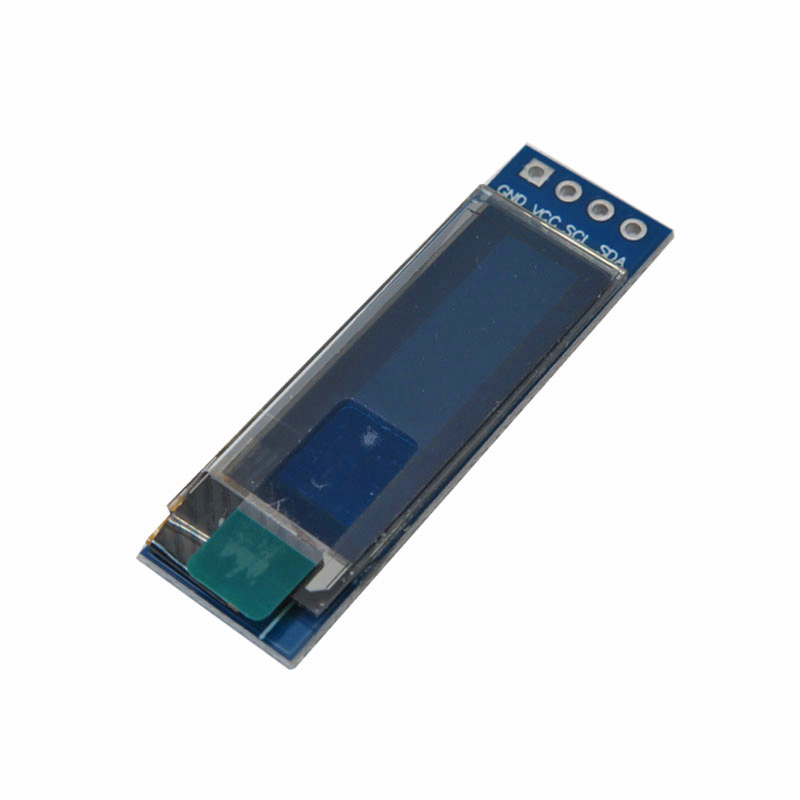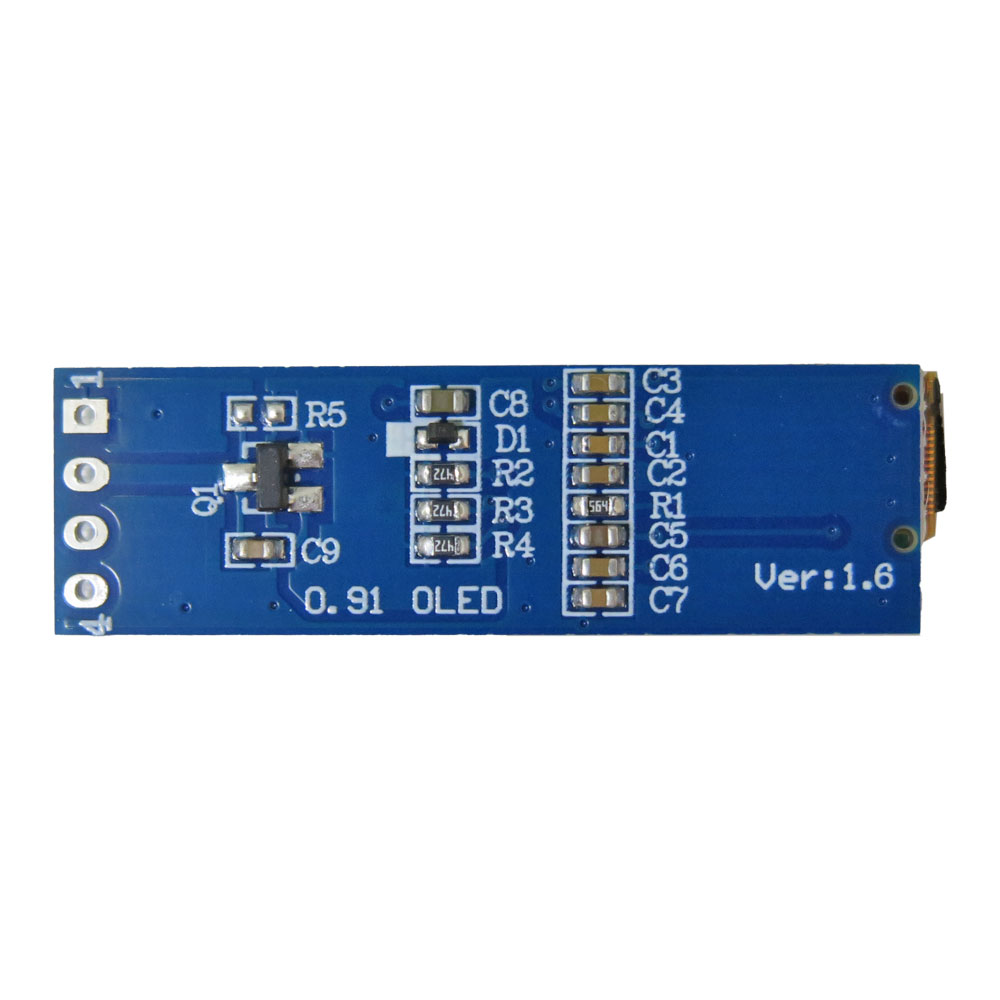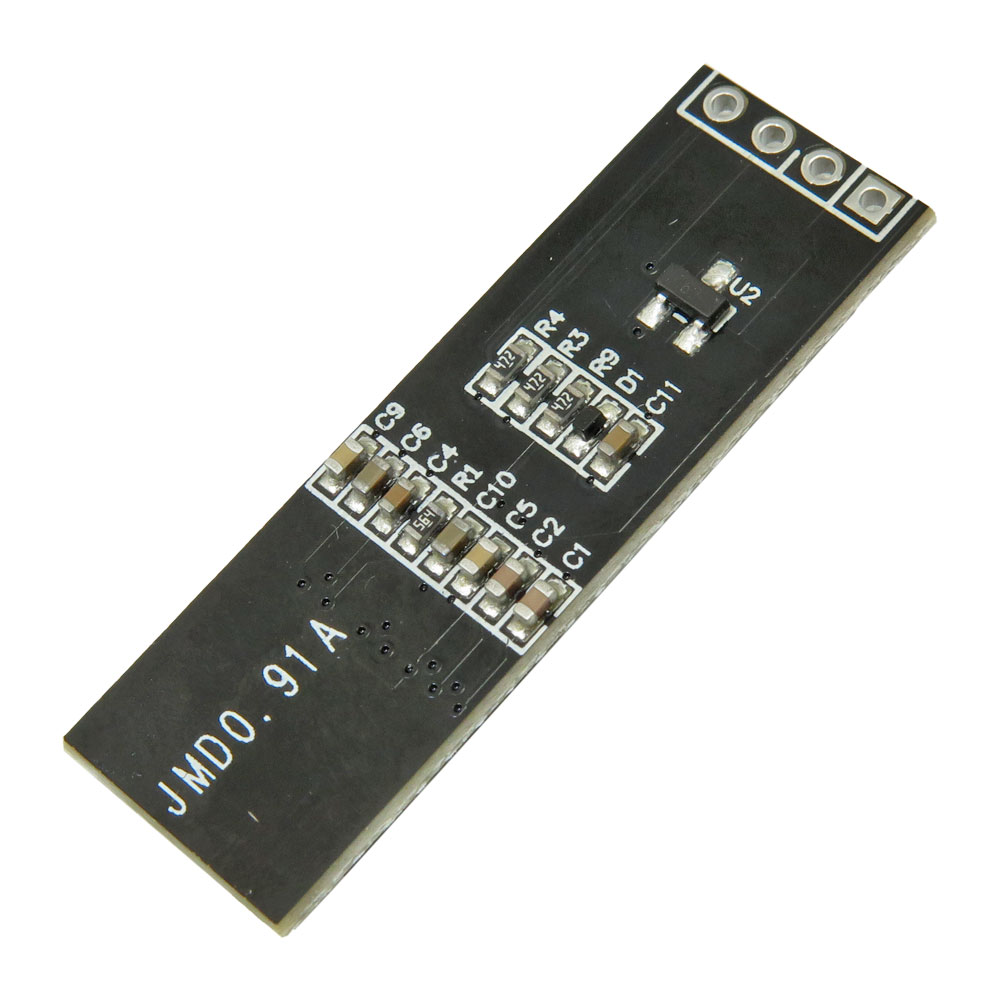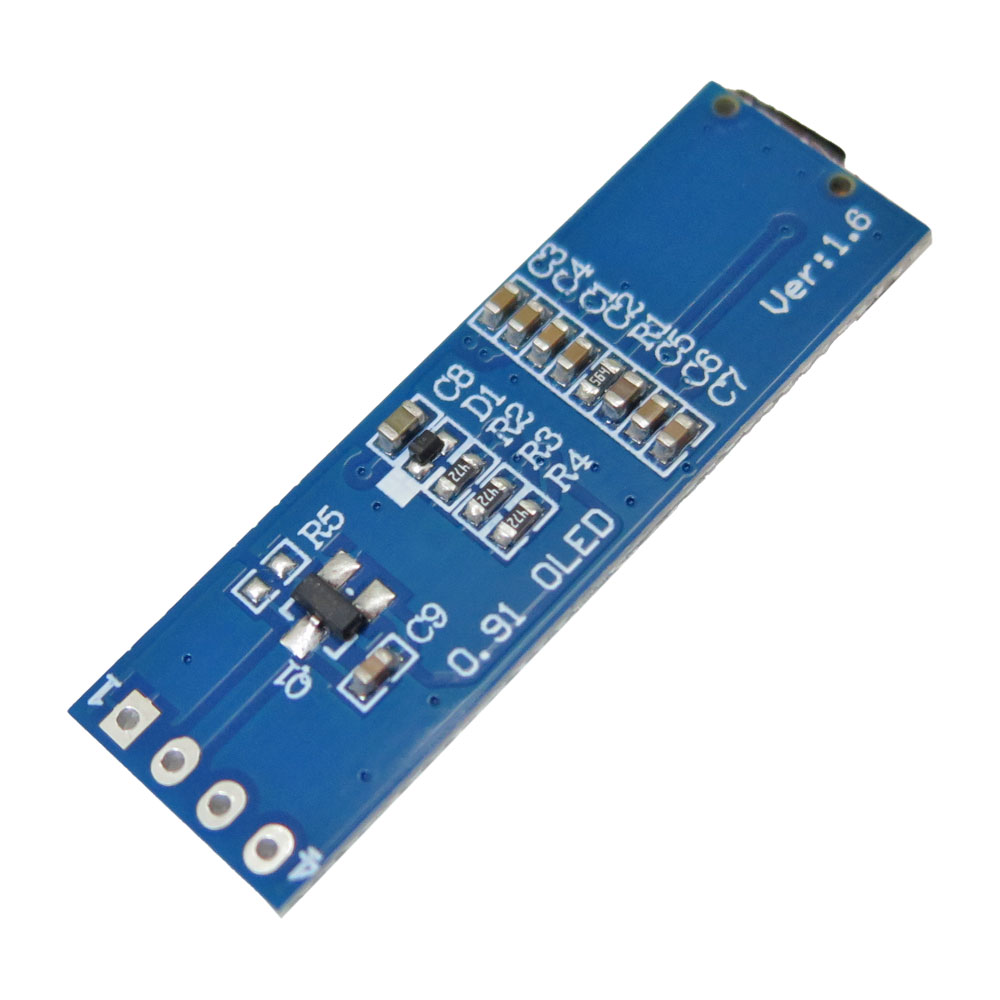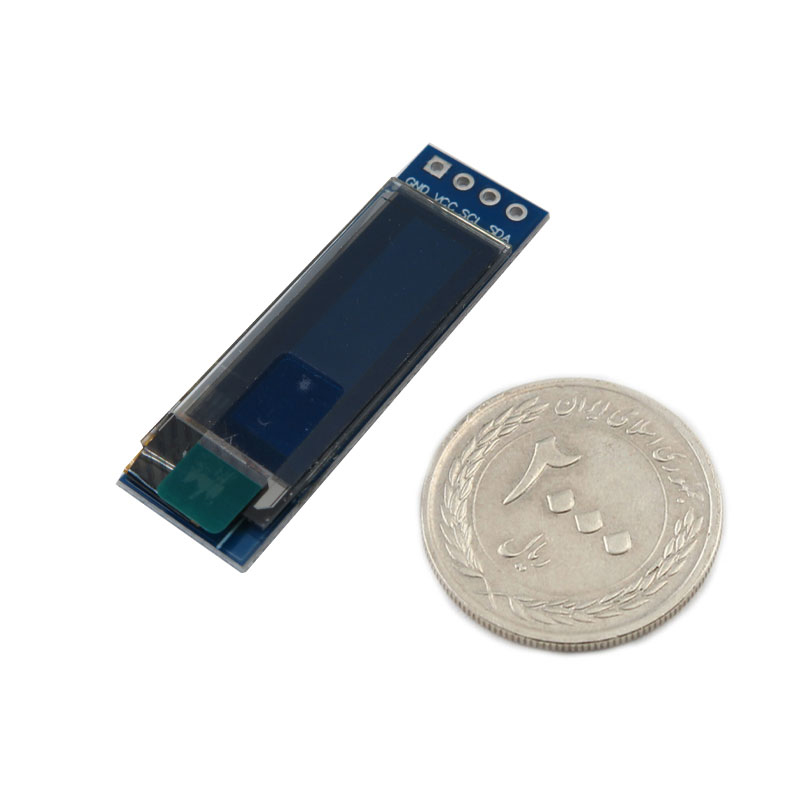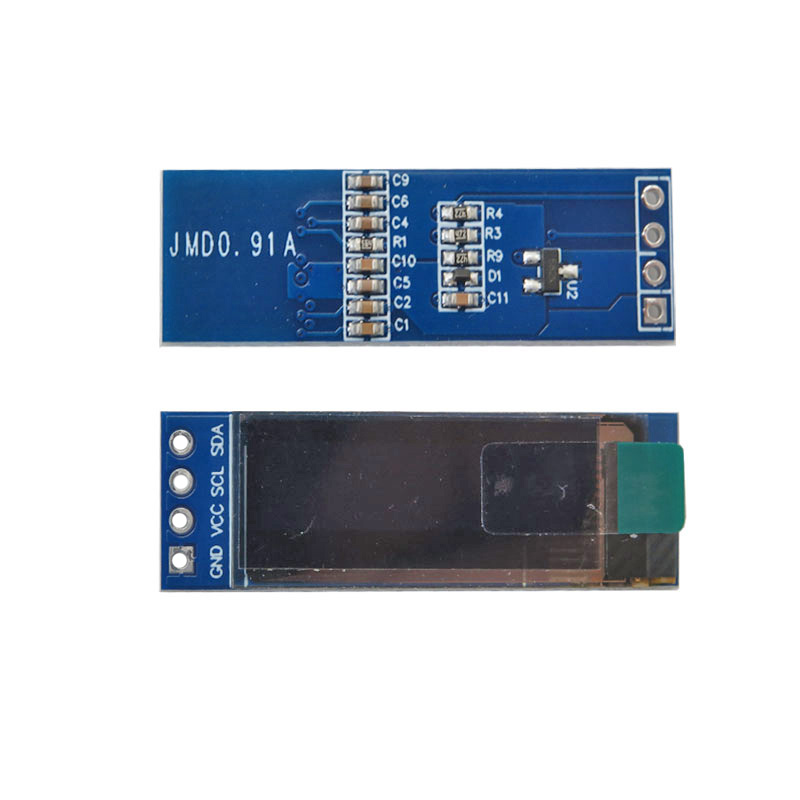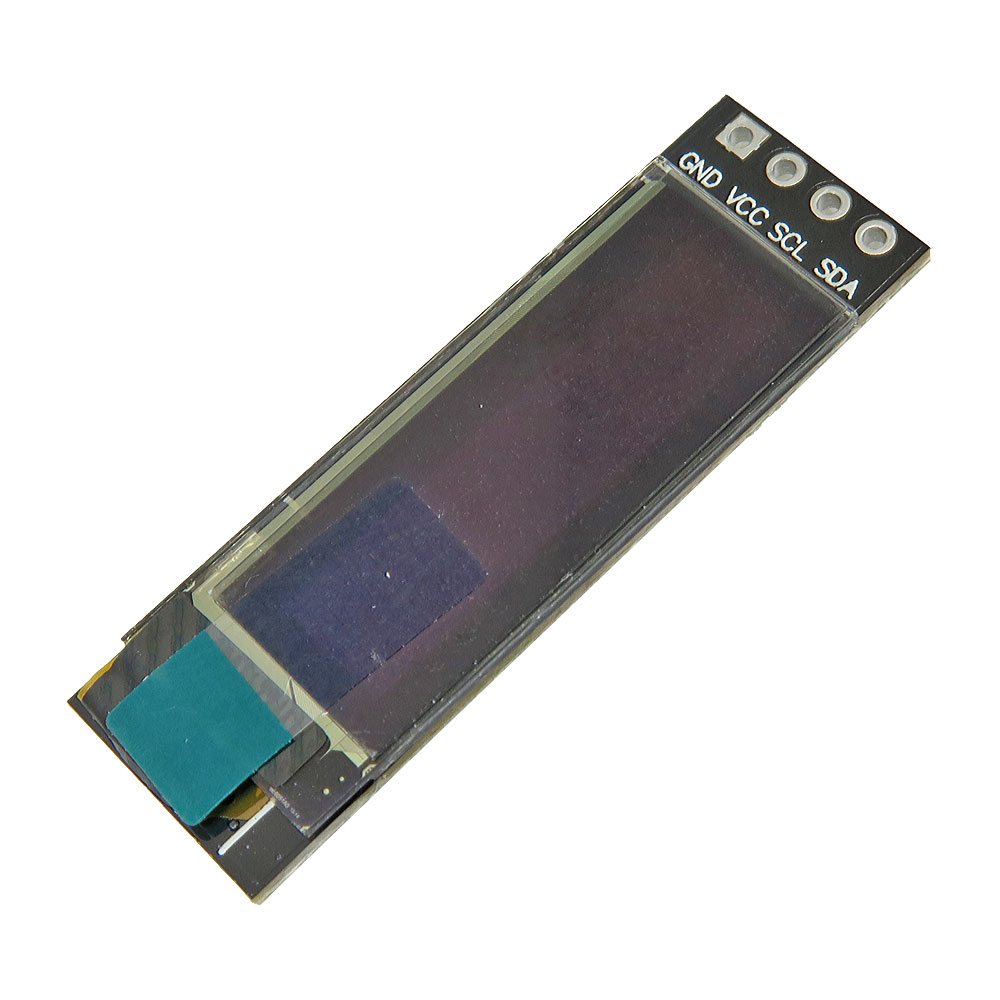136,240 تومان
در حال حاضر موجود نمی باشد
موجودی در حال ارسال به انبار
-
20 عدد1404/08/01
علاقه مندان : 11 نفر
وضعیت : فعال
تعداد مرجوعی : 1
دنبال کنندگان : 15 نفر
قدمت : 8 سال و 7 ماه و 19 روز
وزن : 1 گرم
کل فروش : 731 عدد
تعداد سفارش ها : 292 سفارش
5 از 5.0 با 1 رای
ماژول نمایشگر OLED تک رنگ 0.91 اینچ دارای ارتباط I2C و چیپ درایور SSD1306
کلمه OLED مخفف Organic light-emitting diode و به معنی «دیود ارگانیک گسیل دهندهی نور»است. در واقع به دسته ای از LED ها گفته می شوند که به صورت Organic یا مجموعه ای در کنار یکدیگر قرار داده شده اند. این OLED ها نیاز به نور پس زمینه نداشته و خود صفحه نمایش را تشکیل می دهند. پنل های OLED می توانند بسیار نازک تر از سایر فناوری های نمایشگر باشند.
این ماژول نمایشگر از جنس OLED با اندازه 0.91 اینچ، دارای رزولوشن 128 در 98 پیکسل می باشد.این نمایشگر دارای 4 پایه به نام های GND، VCC، SCL و SDA است.
جهت راه اندازی این ماژول از درایور راه انداز SSD1306 استفاده شده است که شامل 128 سگمنت می باشد و به طور خاص در نمایشگرهای OLED نوع کاتد مشترک استفاده می گردد.
کاربرد نمایشگر تک رنگ دارای ارتباط I2C و چیپ درایور SSD1306 :
- دریافت داده و نمایش اطلاعات بر روی ماژول
- کنترل تجهیزات و بررسی وضعیت آنها
- اینترنت اشیا
مشخصات ماژول صفحه نمایش مدل OLED-0.91M :
- سایز نمایشگر: 0.91 اینچ OLED
- رزولوشن: 128 * 32
- آی سی درایور: SSD1306
Description:
An organic light-emitting diode (OLED or Organic LED), also known as an organic EL (organic electroluminescent) diode, is a light-emitting diode (LED) in which the emissive electroluminescent layer is a film of organic compound that emits light in response to an electric current.
An OLED display works without a backlight because it emits visible light. Thus, it can display deep black levels and can be thinner and lighter than a liquid crystal display (LCD). In low ambient light conditions (such as a darkroom), an OLED screen can achieve a higher contrast ratio than an LCD, regardless of whether the LCD uses cold cathode fluorescent lamps or an LED backlight.
SSD1306 is a single-chip CMOS OLED/PLED driver with a controller for organic/polymer light-emitting diode dot-matrix graphic display system. It consists of 128 segments and 32 commons. This IC is designed for the Common Cathode type OLED/PLED panel. The SSD1306 embeds with contrast control, display RAM, and oscillator, which reduces the number of external components and power consumption. It has 256-step brightness control. A major area of research is the development of white OLED devices for use in solid-state lighting applications.
Application:
OLEDs are used to create digital displays in devices such as television screens, computer monitors, portable systems such as smartphones, handheld game consoles, and PDAs.
Feature:
Size: 0.91 Inch OLED
Resolution: 128 * 32
Driver IC: SSD1306
I2C interface definition:
GND: Power ground
VCC: Power +
SCL: Clock
SDA: Data
